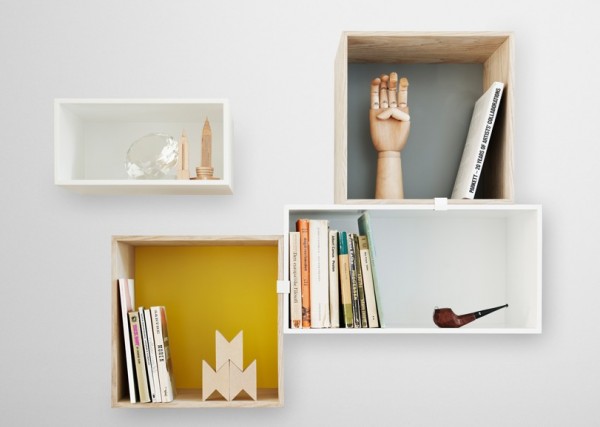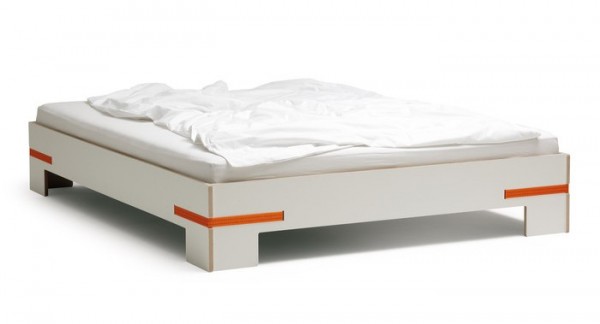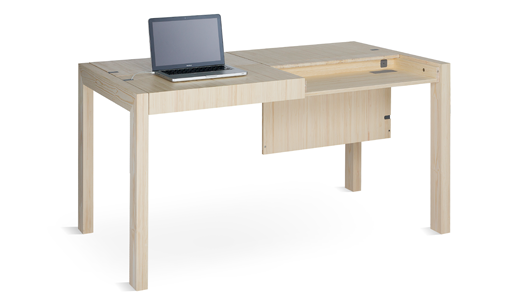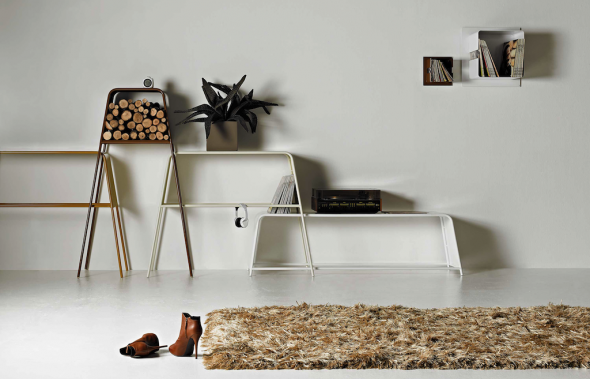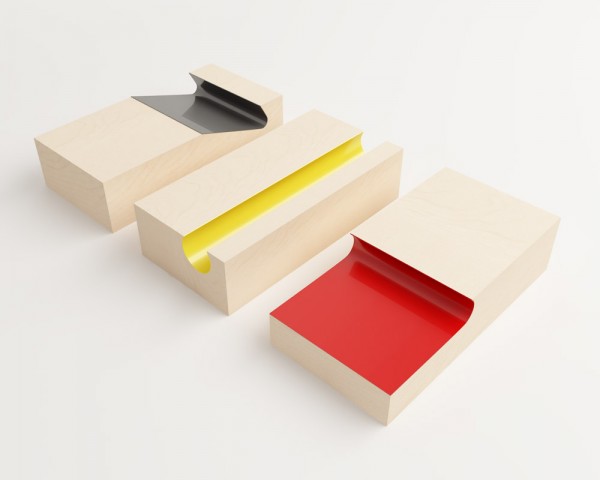 The Kleiderstiele (German for “clothing sticks”) are minimal and clever leaning clothing racks. Designed by Johanna Dehio for Raumgestal, the pieces pose an alternative to the traditional clothing storage arrangements. Light, thin and easily movable, the Kleiderstiele can be stored when not in use and offered to a guest or a party of guests in seconds. The collection includes three hanger sticks of different height and one, equipped with hooks for scarves, hats and handbags. And thanks to the leaning principle – the more you put on these racks, the sturdier they become.
The Kleiderstiele (German for “clothing sticks”) are minimal and clever leaning clothing racks. Designed by Johanna Dehio for Raumgestal, the pieces pose an alternative to the traditional clothing storage arrangements. Light, thin and easily movable, the Kleiderstiele can be stored when not in use and offered to a guest or a party of guests in seconds. The collection includes three hanger sticks of different height and one, equipped with hooks for scarves, hats and handbags. And thanks to the leaning principle – the more you put on these racks, the sturdier they become.
Some of you might remember the Stacked Shelving, designed by wonderful Julien De Smedt of JDS Architects for Muuto. If you like it as much as I do, you will be happy to know that the Stacked family has expanded with a new wall-mounted Mini Stacked series. Just as beautiful, modular and organic, the pieces can be arranged on your wall in many different combinations (with the same cool clips, holding them together). Here is what designer has to say about the project: “How to be specific and generic altogether? Shelving systems have a tendency to achieve one concern but never both. We decided to dimension shelving units based on the generic measurements of things to store and display while allowing for them to be combined according to specific needs and desires… the result can be at times a random stack of boxes or a coordinated grid of efficient storage… or both!” Mini Stacked is envisioned for things you want to store and display at the same time, a “modest shelving to show your great things…”
Gurtbett (German for “strapped bed”) can be carried and assembled by one person. Its clever flat-pack design also allows to store the piece or move to another home with ease. The construction is based on straps that hold individual plywood pieces together. No assembly tools required. According to the manufacturer, Gurtbett is sturdy and can hold a standard mattress just like any traditional bed would. The straps come in two colors – neutral off-white and orange. An excellent idea and beautiful execution.
(via swissmiss)
SmartDeco is LA-based studio, founded by Trent John Mayol, a USC student who likes low prices, mellow vibes, and a simple approach to furniture. Inspired by his own vagabond living, this innovative line is light, incredibly easy to assemble and affordable. Every item is proudly made in America and comes with an assembly video to make the experience completely painless. “Furniture can be an unnecessary source of stress in people’s lives and we exist to fix that as the SMART alternative for furniture. Our sole aim is to save you time and money while making sure you stay stylish, green and patriotic,” – says the designer. The pieces do look rather nice and can serve as a great solution for a starter apartment.
The Warp side table has been designed by Oliver Schick for Ligne Roset and recently unveiled at the IMM Cologne. Portable and lightweight, the piece is made of powdercoated steel and lacquered MDF. The object’s size is perfect for a TV night smack or a quick computing. The cleverly shaped based allows maximum leg room and takes minimum space. The handle is also a nice touch, it makes the piece look and feel mobil and easy to deal with. The neutral design of the object, paired with contemporary practicality, makes Warp a serious contender for a small urban setting.
This fun and unusual bookcase was created by Italian born and South Africa based architect Aram Lello of Lello Design. The piece, called Tag, is a modular system that allows many exciting configurations. And because it looks equally good from all angles, you can use it as a room divider as well. The modules can be taken apart and used as stools or side tables. Lovely! Tag comes in a variety of bold colors, but if you are intimidated by goudy vividness, more tamed wooden finishes are available.
Deski is an interesting attempt at combining a workspace with a dinner table. Created by Finnish designer Markus Toivanen, the piece is a four-seated dining table by day and a spacious desk by night (or the other way around). The beautiful part is that you don’t need to put all your work-related things away. Just cover your creative mess with four panels, attached to the table via magnets, and you are good to serve food and entertain. These four removable components make your work flexible too. You can take them apart and keep the surface open, or you can close some of the panels and create storage compartments. Made from sustainable pinewood by-product, the piece is compact, clever and eco-friendly. I hope it doesn’t linger on the concept stage and gets produced soon.
This graceful modular storage series was designed by Marco Guazzini and Tsukasa Goto of Noto studio for Italian brand Officinanove. The system is comprised of three components in different sizes: tall, medium and short. They can be put in various configurations depending on function and space requirements. I particularly like the shape of these modules. What a beautiful way to break the rectangular pattern of traditional storage… Designers elaborate: “The idea behind the shape is inspired by a ballet school, where many girls are training by running various positions, which will give life to ballet. Similarly the elements of Mademoiselles change position, creating a dance with multiple functions.” The frame is tubular steel with welded steel metal sheet. Additional components can be added to the first three, depending on needs, to tailor the space to its intended purpose.
These cool minimalist objects were created by Belgian designer Mathieu Guyaux. Based on identical solid white oak parallelepiped, each element underwent a specific cut (hence, the name) to give it its own identity. These different cuts allow a large number of applications. You can turn each piece vertically, horizontally, or sideways and use it as a coffee table, side table, nightstand, umbrella stand, magazine rack, pedestal, you name it… Simple, beautiful, refreshing (love the lacquered color detail) and very useful in any space, big or small.
We’ve seen many modular pieces, comprised of boxes and shelving structures. This next project is different. It uses a humble chair as a module. Korean designer Seung-Yong Song created a collection, called 8-Objects, in which 8 chairs are put together to form a bed. Each chair can be used as a stand-alone piece, of course. And even when taken as separate pieces of furniture, they can do much more than providing bumrest. One doubles as a clothing rack, another serves as a small desk, while others add step ladder, bookshelf and bedroll to their functions.

